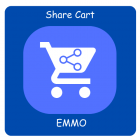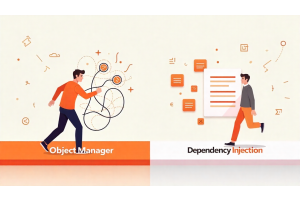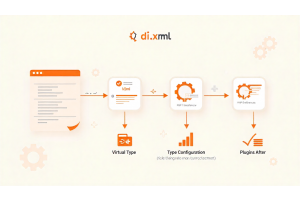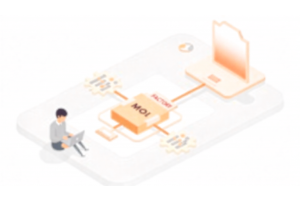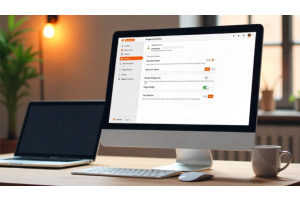9 Essential Sales Metrics to Measure and Boost Business Growth

9 Essential Sales Metrics to Measure and Boost Business Growth
Table of Contents
- Understanding Sales Performance Metrics
- Sales Revenue: The Foundation of Growth Measurement
- Customer Acquisition Cost (CAC): Tracking Investment Efficiency
- Lead Conversion Rate: Measuring Sales Effectiveness
- Average Deal Size: Maximizing Each Opportunity
- Sales Cycle Length: Improving Sales Efficiency
- Customer Lifetime Value (CLV): Focusing on Long-Term Gains
- Sales Growth Rate: Monitoring Business Expansion Trends
Understanding Sales Performance Metrics
Sales performance metrics are crucial for evaluating the effectiveness of your sales strategies and understanding the overall health of your business. These metrics go beyond just revenue—they provide deep insights into different aspects of your sales process, from how well your team is converting leads to how much it costs to acquire a new customer. By regularly tracking and analyzing key sales metrics, businesses can uncover strengths and weaknesses, enabling them to refine their sales approach, improve efficiency, and make more informed decisions. Understanding these metrics is the first step toward creating a solid framework for consistent business growth.
Tracking sales performance metrics ensures that decision-making is data-driven rather than based on guesswork. These metrics also help you set realistic goals, identify potential problems before they become critical, and improve accountability across your sales teams. When combined with customer feedback and market trends, sales metrics provide a comprehensive view of your business’s trajectory.
Sales Revenue: The Foundation of Growth Measurement
Sales revenue represents the total income generated from selling products or services over a defined period, and it’s often considered the most important sales metric for any business. It provides a clear picture of how much your company is earning and is a direct indicator of growth. Monitoring sales revenue regularly enables businesses to evaluate whether their products or services are meeting market demand and whether sales efforts are driving meaningful results.
However, it’s important to break down sales revenue into more granular categories—by product line, geographic region, or even individual sales reps. This helps you identify which areas are contributing most to overall growth and which need improvement. Year-over-year or quarter-over-quarter comparisons can reveal trends and highlight periods of strong or weak performance. Revenue tracking is foundational, but combining it with other metrics like customer acquisition cost and conversion rates provides a more accurate view of your growth potential.
Tip
If you offer your SEO texts in several languages or localize them for different regions, your pages may be incorrectly classified as duplicate content. However, there is a simple solution to this in the form of hreflang. Our article explains what you need to bear in mind when using hreflang.
Read more about hreflangCustomer Acquisition Cost (CAC): Tracking Investment Efficiency
Customer Acquisition Cost (CAC) is a critical metric that shows how much your business spends to acquire a new customer. It includes costs such as marketing expenses, sales team salaries, advertising campaigns, and any other resources involved in the sales process. Calculating CAC is simple: take your total sales and marketing expenses and divide them by the number of new customers acquired during that period.
A low CAC means that your business is acquiring customers efficiently, while a high CAC may indicate that your sales and marketing processes need adjustment. It’s essential to balance your CAC with Customer Lifetime Value (CLV) to ensure that the cost of acquiring a customer is justified by the revenue that customer brings over time. Reducing CAC without compromising lead quality is a surefire way to boost profitability and ensure sustainable growth.
Lead Conversion Rate: Measuring Sales Effectiveness
Lead conversion rate measures the percentage of leads that turn into paying customers. It’s one of the most important metrics for evaluating how effective your sales process is at turning prospects into buyers. A high conversion rate suggests that your sales team is efficient at closing deals and that your lead generation efforts are attracting the right kind of prospects.
To calculate the lead conversion rate, divide the number of leads converted into sales by the total number of leads, and then multiply by 100 to get a percentage. Improving your conversion rate requires analyzing where potential customers are dropping off in the sales funnel. For example, are prospects failing to move beyond the discovery phase? Are they hesitant at the negotiation stage? Understanding the bottlenecks in your sales funnel allows you to fine-tune your process and increase your chances of converting leads into customers.
Average Deal Size: Maximizing Each Opportunity
Average deal size refers to the average amount of revenue generated per closed sale. It’s an important metric for understanding the value of each transaction and for forecasting future revenue. Larger deal sizes typically contribute more to overall growth, but they can also take longer to close. Smaller deals, on the other hand, may close faster but might require a higher volume to drive significant revenue.
Tracking average deal size helps businesses identify opportunities to upsell or cross-sell to existing customers, which can increase the value of each sale without needing to generate new leads. It also helps in setting sales quotas, forecasting revenue, and allocating resources efficiently. A consistent increase in average deal size is a positive sign that your business is offering more value to customers or that you’re effectively targeting higher-value clients.
Sales Cycle Length: Improving Sales Efficiency
The sales cycle length is the average time it takes from the initial contact with a prospect to closing the deal. Understanding and reducing the length of your sales cycle is key to improving sales efficiency. A shorter sales cycle means your team can close more deals in a shorter time, increasing overall productivity and revenue generation.
A long sales cycle may indicate inefficiencies in your process—perhaps there’s a delay in responding to leads, or the negotiation process is taking too long. By identifying where the bottlenecks are, you can work to shorten the cycle without sacrificing the quality of the deal. Implementing automation tools, improving lead qualification, and better training for sales teams can all help in reducing sales cycle length, allowing your business to grow more quickly.
Customer Lifetime Value (CLV): Focusing on Long-Term Gains
Customer Lifetime Value (CLV) measures the total revenue your business expects to generate from a single customer throughout their relationship with your company. It’s a key metric for understanding the long-term impact of your sales and marketing efforts. A high CLV indicates that your customers are loyal and generate repeat business, while a low CLV suggests you may need to focus more on retention strategies.
To calculate CLV, multiply the average value of a sale by the number of transactions and the customer’s expected lifespan. CLV helps you make smarter decisions about customer acquisition—if a customer’s lifetime value is significantly higher than your CAC, then your sales and marketing strategies are working efficiently. Increasing CLV can be achieved by improving customer satisfaction, offering excellent after-sales support, and providing additional products or services that add value to your existing customer base.
Sales Growth Rate: Monitoring Business Expansion Trends
Sales growth rate is the percentage increase or decrease in sales over a specific period, such as month-over-month or year-over-year. This metric helps you understand if your business is scaling at a sustainable pace and whether your sales strategies are contributing to overall growth. It’s one of the clearest indicators of business success and a critical measure for identifying trends and predicting future performance.
A steady or increasing sales growth rate shows that your business is expanding, gaining market share, and attracting more customers. A declining sales growth rate may indicate that your sales strategies need reevaluation or that external factors, such as market saturation or increased competition, are impacting your business. Regularly monitoring sales growth rates allows you to respond quickly to challenges and capitalize on new opportunities, ensuring continuous growth.
| 9 Essential Sales Metrics to Measure and Boost Business Growth | |
|---|---|
| 1. Understanding Sales Performance Metrics | Learn the importance of sales metrics for evaluating the effectiveness of your sales strategies, identifying strengths and weaknesses, and making data-driven decisions to drive growth. |
| 2. Sales Revenue: The Foundation of Growth Measurement | Sales revenue is a key metric representing the total income from sales. It helps assess whether your products or services are meeting market demand and driving growth. |
| 3. Customer Acquisition Cost (CAC): Tracking Investment Efficiency | Customer Acquisition Cost (CAC) measures how much it costs to acquire a new customer, enabling businesses to assess the efficiency of their sales and marketing investments. |
| 4. Lead Conversion Rate: Measuring Sales Effectiveness | Lead conversion rate indicates the percentage of leads that turn into paying customers, offering insight into the effectiveness of your sales process. |
| 5. Average Deal Size: Maximizing Each Opportunity | Average deal size helps businesses understand the value of each transaction and identify opportunities to increase the revenue generated per deal. |
| 6. Sales Cycle Length: Improving Sales Efficiency | Sales cycle length measures the time it takes to close a deal. Shortening the sales cycle can improve efficiency and increase the number of deals closed. |
| 7. Customer Lifetime Value (CLV): Focusing on Long-Term Gains | Customer Lifetime Value (CLV) indicates the total revenue a business can expect from a customer over their relationship, helping to focus on long-term profitability. |
| 8. Sales Growth Rate: Monitoring Business Expansion Trends | Sales growth rate measures the percentage increase or decrease in sales over time, helping businesses understand their growth trends and make strategic decisions. |
FAQs
What Are Sales Performance Metrics?
Sales performance metrics are key indicators that help businesses evaluate how well their sales strategies are performing. They provide insights into areas such as lead conversion, customer acquisition costs, and revenue, enabling businesses to measure growth and optimize their approach.
Why Should Businesses Track Sales Metrics?
Tracking sales metrics ensures data-driven decision-making, which helps businesses set realistic goals, identify potential issues, and hold teams accountable. It also provides a comprehensive view of performance, allowing for improvements in both efficiency and growth.
How Does Sales Revenue Impact Business Growth?
Sales revenue represents the total income generated from selling products or services. It's a key metric that shows the financial health of a business and helps evaluate whether sales strategies are successful in meeting demand and driving growth.
What Is Customer Acquisition Cost (CAC) and Why Is It Important?
CAC measures how much it costs to acquire a new customer, including marketing and sales expenses. It's important because it helps businesses understand the efficiency of their acquisition strategies and ensures that the costs of gaining new customers are justified by their long-term value.
What Does Lead Conversion Rate Measure?
Lead conversion rate measures the percentage of leads that turn into paying customers. It's an essential metric for determining how effectively a sales team converts prospects into buyers, revealing the success of sales processes and lead generation efforts.
Why Is Average Deal Size Important?
Average deal size shows the average revenue generated per closed sale. It helps businesses understand the value of each transaction, forecast revenue, and identify opportunities to increase the value of sales through upselling or targeting high-value customers.
What Is Sales Cycle Length and How Does It Affect Business Efficiency?
Sales cycle length refers to the time it takes to close a deal from the initial contact with a prospect. A shorter cycle improves sales efficiency, while a long cycle may indicate bottlenecks that need to be addressed to boost overall productivity.
How Can Customer Lifetime Value (CLV) Help Improve Sales Strategies?
CLV measures the total revenue a business expects to generate from a customer throughout their relationship. It helps businesses focus on customer retention and long-term growth, ensuring acquisition costs are justified by the revenue generated over time.
Why Is Monitoring Sales Growth Rate Essential for Business Success?
Sales growth rate shows the increase or decrease in sales over time. Monitoring this metric helps businesses understand whether their strategies are driving expansion and allows them to respond quickly to challenges, ensuring sustainable growth.




